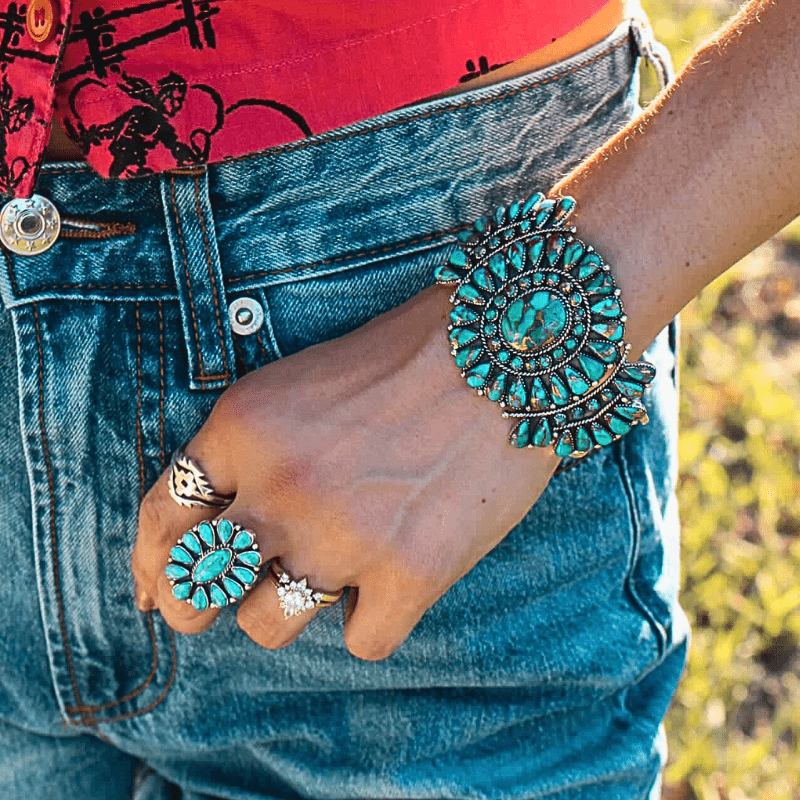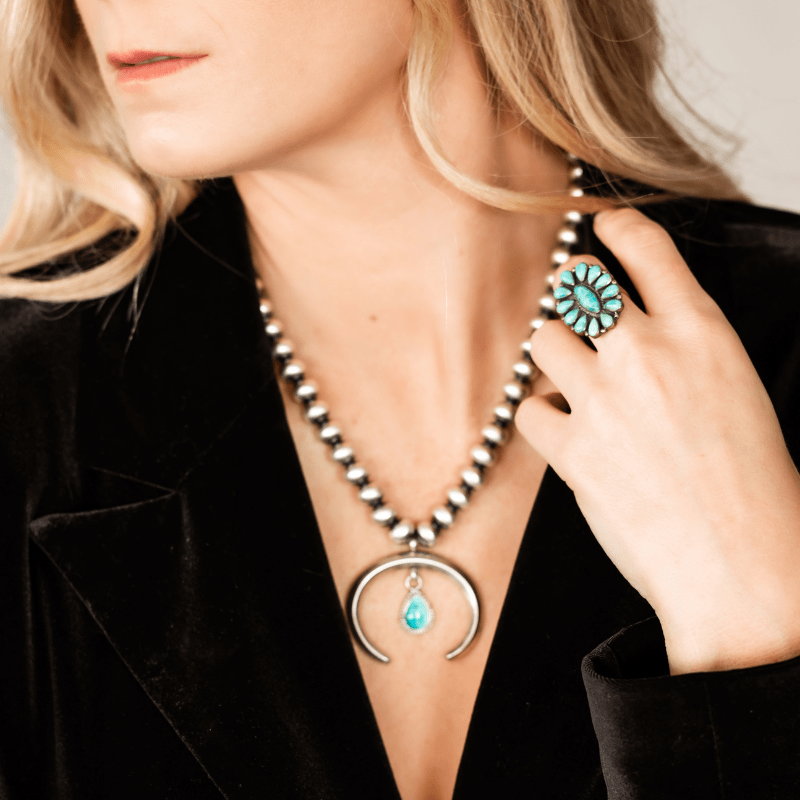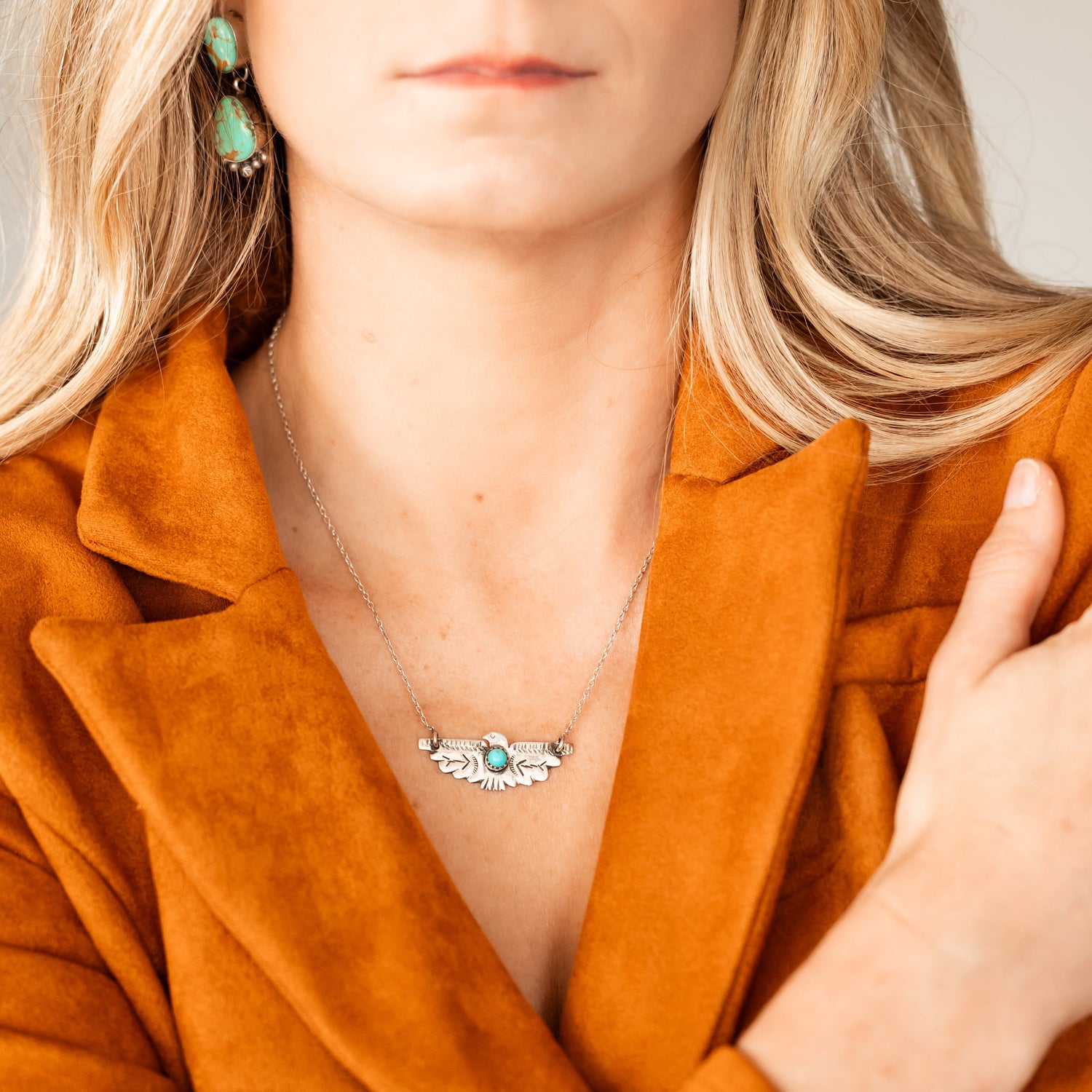THE BEAUTY OF SOUTHWEST JEWELRY
-
Southwest fashion is more than just a style; it’s a celebration of heritage, artistry, and the rugged beauty of the Southwestern United States. With its rich tapestry of colors, patterns, and natural elements, this fashion embodies a unique blend of culture and modernity. It’s a style that tells a story—of the land, its people, and their timeless traditions.
From the bold hues of the desert to the intricate artistry passed down through generations, Southwest fashion reflects a profound connection to nature and craftsmanship. It’s not just about clothing or accessories; it’s about expressing individuality while honoring a cultural legacy.
-

One of the most captivating elements of Southwest fashion is its jewelry. Southwest jewelry stands out for its intricate designs and use of vibrant, earthy materials. Turquoise, a hallmark of this style, adds a splash of color and elegance to any outfit. Each piece, whether it's a necklace, bracelet, or pair of earrings, tells a story of tradition and craftsmanship. The vibrant array of natural stones, from rich turquoises to deep corals, embodies the earthy essence and variety inherent in Southwest fashion design.

The iconic black ensemble, as timeless as the desert itself, speaks to the modern soul that still values the lore of the land. It's in this balance that Southwest fashion finds its true character—unrestrained, bold, and infinitely adaptable to the individual's taste. Whether it's the stark elegance of a black outfit or the rustic charm of a draped gown that harkens back to the pioneering spirit of the old Southwest, each garment tells a story.

The latter style, evocative of the region's historical attire, is reimagined with modern cuts and artistic embellishments that pay homage to the past while looking forward to the future of fashion. In this way, Southwest fashion continues to evolve, inviting wearers to express their personal narrative through clothing that is both a tribute to heritage and a celebration of contemporary style.

The Time-Honored Tradition
The distinguished artistry behind Southwest jewelry contributes significantly to its desirability. Artisans, often with skills passed down through generations, meticulously handcraft each piece, ensuring that the spirit of the Southwest is encapsulated within every design. The vibrant turquoise, often sourced from the region's mineral-rich grounds, is not only a feast for the eyes but also a nod to the cultural significance it holds. Revered for its beauty and supposed healing properties, turquoise has been a staple in the adornment of both people and places in the Southwest for centuries. Paired with silver, it captures the essence of the southwestern sky and earth, bridging the gap between contemporary fashion and indigenous tradition.
Some Hey Zoe Southwest jewelry suggestions
-
 Aanbieding
AanbiedingTurquoise Stud Earrings | Best Seller
Normale prijs $58.00 CADNormale prijsEenheidsprijs / per$78.00 CADAanbiedingsprijs $58.00 CADAanbieding -
 Aanbieding
AanbiedingBoho Turquoise Spinner Ring
Normale prijs $78.00 CADNormale prijsEenheidsprijs / per$125.00 CADAanbiedingsprijs $78.00 CADAanbieding -
 Aanbieding
AanbiedingKingman Turquoise Cluster Ring
Normale prijs $203.00 CADNormale prijsEenheidsprijs / per$270.00 CADAanbiedingsprijs $203.00 CADAanbieding -
 Aanbieding
AanbiedingMoonstone Spinner Ring
Normale prijs $64.00 CADNormale prijsEenheidsprijs / per$127.00 CADAanbiedingsprijs $64.00 CADAanbieding




